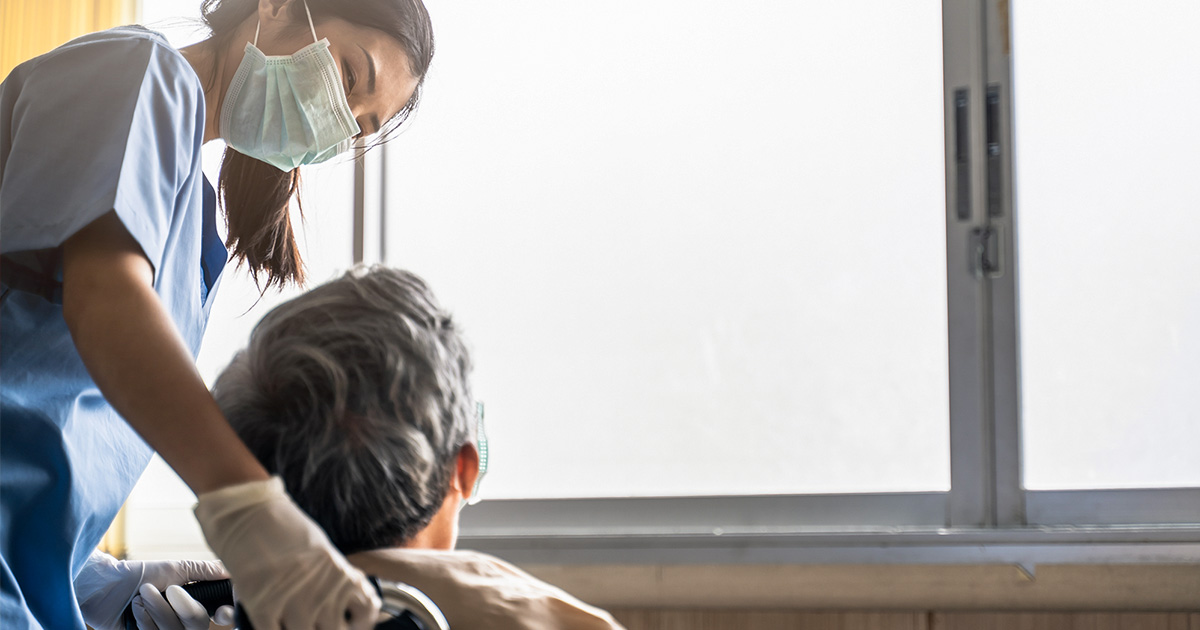The impact of COVID-19 on residents of long-term care facilities has been devastating. Connecticut experienced high mortality caused by the spread of COVID-19 in its nursing homes and assisted living facilities and initiated an independent review to assess actions that might help mitigate what many experts anticipate will be a second wave of the disease. The review will help the state use the best available evidence to adjust its policies and programs in ways that will improve long-term care facility outcomes going forward. Connecticut selected Mathematica to execute the study.
Today, Mathematica released an interim report detailing its preliminary assessment of the COVID-19 outbreak in long-term care facilities as well as a set of short-term recommendations to help Connecticut and long-term care facilities prepare for a potential second wave of COVID-19. The final report will have a more complete assessment of the state’s and long-term care industry’s preparedness and response. The recommendations will also guide policymakers in preparing for and even preventing future infectious disease outbreaks.
Mathematica analyzed publicly reported data from the state’s long-term care facilities to understand the extent of the outbreak, including which facilities had the worst outbreaks. We compared Connecticut’s data from long-term care facilities with publicly reported data from other states in the region, and we interviewed a wide range of stakeholders in the state to determine what was effective and what can and should change with better preparation and resources. Interviewees included state agency staff, facility administrators, trade association representatives, labor representatives, legislators, and family members with loved ones living in long-term care facilities. Finally, we reviewed all relevant policy documentation and guidance as part of our assessment of the state’s preparedness and response to the COVID-19 outbreak.
The interim report found that COVID-19 cases and deaths were concentrated in certain long-term care facilities. The prevalence of COVID-19 in the surrounding community was a major predictor of its effect on nursing homes and assisted living communities. The other major predictors were its level of staffing and whether the nursing home was for-profit. For-profit nursing homes had about 60 percent more cases and deaths than nonprofit nursing homes. Nursing homes with higher reported staffing also had significantly fewer cases and deaths than those with lower staffing.
“Like much of the country, Connecticut’s long-term care facilities were hit hard by COVID-19. Our preliminary assessment of the state’s response found that state officials made policy decisions and issued guidance based on the available knowledge at the time from national and state epidemiologists and public health experts, but that knowledge was undermined by gaps in the scientific understanding of the virus,” said Patricia Rowan, researcher at Mathematica and the project’s director. “Connecticut took an important step in supporting this independent research, and we believe our recommendations will help ensure that the state and long-term care industry are better positioned to respond to a potential second wave of COVID-19.”
Based on its preliminary analysis, Mathematica recommended the following steps:
- The state and long-term care industry should balance strict measures meant to limit the spread of the virus with the necessary person-centered supports for residents’ physical, emotional, and psychosocial needs.
- The state should ensure that all personnel inspecting nursing homes receive ongoing training, specifically in infection control and prevention, and that these inspectors are regularly tested so that they do not become potential sources of infection.
- The state should continuously revisit its guidance related to testing residents and staff as scientific understanding of the virus evolves and testing capacity remains ample.
- The state should continue its work to procure and distribute personal protective equipment to long-term care facilities as needed.
- Facilities should adopt staffing policies that can help limit exposure for staff and residents. The state should extend its temporary suspension of in-state licensure requirements for as long as the public health emergency remains in place.
- The state should work with facilities to make a concerted effort to allow residents and loved ones to safely visit and to provide family members with accurate and timely information on residents’ health and well-being.
- The state should begin planning now to expand the capacity of COVID-19 recovery facilities so it can deploy quickly in response to the severity of a potential second wave.
- The state should continue to assess how it supports facilities with the cost of widespread testing of residents and staff and consider options for enhanced Medicaid reimbursement to nursing homes.
.


